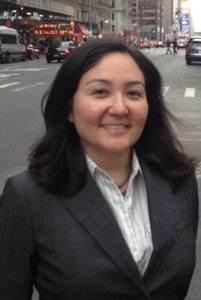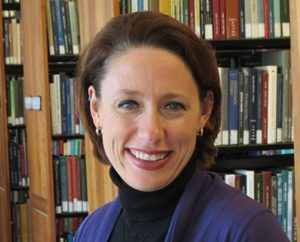Teaching Technology-Mediated Practice in a Clinical MSW Program
 Janet Vizina-Roubal, DSW, MSW, is an Associate Professor of Social Work at Ferris State University in the Department of Social Work. In this blog post, she writes about her inspiration for a technology-mediated practice assignment with MSW students. Assignments like this one will be increasingly valuable for social work students preparing to use technology with clients while meeting professional and ethical practice standards such as the NASW Code of Ethics and the NASW, ABSW, CSWE & ACSW Standards for Technology in Social Work Practice. If you have questions about the assignment, you can reach Dr. Vizina-Roubal on Twitter at @jvizina.
Janet Vizina-Roubal, DSW, MSW, is an Associate Professor of Social Work at Ferris State University in the Department of Social Work. In this blog post, she writes about her inspiration for a technology-mediated practice assignment with MSW students. Assignments like this one will be increasingly valuable for social work students preparing to use technology with clients while meeting professional and ethical practice standards such as the NASW Code of Ethics and the NASW, ABSW, CSWE & ACSW Standards for Technology in Social Work Practice. If you have questions about the assignment, you can reach Dr. Vizina-Roubal on Twitter at @jvizina.
I started teaching my first clinical MSW course the fall of 2014 with excitement and nervousness. With almost eight years of clinical experience in school social work and outpatient therapy, I had a great toolbox of practice tips to share with my students. Adding to the excitement was the idea of creating a technology-based assignment where students could learn and practice technology-enhanced therapy skills. Because I had completed and presented research with a colleague about the benefits of using iPhones in child welfare work, I was curious about how I could create a technology-based assignment for MSW social work students.
Clinical MSW social work classes typically rely on a vast amount of face-to-face role-plays, requiring students to play the part of client and social worker. This experiential learning is challenging, however is very effective at teaching students critical clinical skills. I was interested in stretching this experiential learning process into role-plays for a technology-mediated learning environment, with the goal of helping students learn how to engage with clients via technology-based communication tools. Based on this idea, I worked to structure assignments that would allow students to learn how to use technology within clinical social work. As I embarked on this journey, I searched for curricula or assignments on how to teach online therapy along with best practices. Bewildered, I found almost nothing (Cardenas, Serrano, Flores, & De 2008). I did stumble upon research that showed promising findings that online therapy might be as effective as face-to-face therapy (Chester & Glass, 2006; Dowling & Rickwood, 2013; Holmes & Foster, 2012). This finding legitimized my interest in pursuing this course of instruction and compelled me to develop assignments where students gained experience within online therapy; practicing as the client as well as the therapist.
Supporting the success of online students who are deaf: Lessons presented at #SWDE2017
Matthea Marquart, MSSW, is the director of administration of the Online Campus at Columbia University School of Social Work as well as an adjunct lecturer, and Beth Counselman-Carpenter, LCSW, PhD, is a full-time lecturer of direct and advanced clinical practice, gender and sexuality, with her current research focusing on technology in social work pedagogy. In this blog post, they share highlights from their recent presentation on supporting the success of online students who are deaf. If you have questions for them, they can be reached on Twitter at @MattheaMarquart or @ElisabethAnneCC.
On April 13, 2017, we presented a roundtable session on “Supporting the success of online students who are deaf” at the third annual Social Work Distance Education Conference sponsored by Our Lady of the Lake University’s Worden School of Social Service.
We chose this session topic because social work values, as well as the law, require those of us involved in online education to ensure that we’re providing equal access to all of our students. As the field of online education grows and new technologies develop, it’s important to us to make sure that we’re inclusive in administration, planning, and teaching. We also wanted to host a conversation on the topic, so that we could learn from the experiences of our peers at other institutions.
You can access a copy of our handout, which includes details about the tools & strategies we’ve used to support online students who are deaf, here: https://doi.org/10.7916/D8V12B58
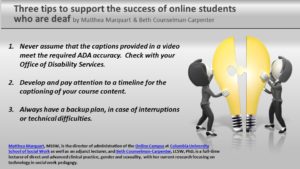 From our perspective, there are three critical components to success: never assume, attention to a solid time line, and thorough preparation with a back-up plan for live course sessions.
From our perspective, there are three critical components to success: never assume, attention to a solid time line, and thorough preparation with a back-up plan for live course sessions.
Never assume: My experiences (Beth) with deaf and hearing-impaired students over the past year has made me a stronger and more thoughtful instructor. It forced me to actively challenge certain assumptions I had previously held about equal access and thus deepened the creativity in and outside of the classroom to look at access through a more critical lens. When choosing media for your course, never assume that the captions provided are of the level and caliber in terms of accuracy. YouTube videos are NOT equal access compliant, as they are often inaccurate or their timing is off. All media selected by the instructor must be captioned by the institution’s captioning services or be reviewed for accuracy by the Office of Disability Services prior to being assigned, shown or posted. This also includes transcribed videos shown from the library, when transcription has been completed by outside sources, and for podcasts.
FERPA & Social Media: Thoughts for Social Work Education
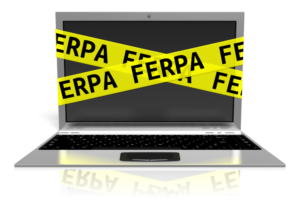 What about FERPA? This is one of the most common questions I hear when presenting about using social media in the classroom. FERPA, the Family Educational Rights and Privacy Act, is the US federal law that protects the privacy of students’ educational record, and ensures that students have some control over their records. Examples of what is included in an educational record at the post-secondary level include grades, transcripts, class lists, student course schedules, and student financial information. Social work educators are often very aware of privacy and disclosure of personally identifiable information because of our practice backgrounds and the NASW Code of Ethics, so FERPA makes sense to us. It is understood that we should abide by FERPA and our professional standards of privacy and informed consent while modelling appropriate ethical standards for our students. However, this does not mean that social media is off-limits as an educational and professional development tool (Drake, 2014). Rather it means that as social work educators, we can use social media with students as long as we do so in ethical and legal ways (Rodriguez, 2011).
What about FERPA? This is one of the most common questions I hear when presenting about using social media in the classroom. FERPA, the Family Educational Rights and Privacy Act, is the US federal law that protects the privacy of students’ educational record, and ensures that students have some control over their records. Examples of what is included in an educational record at the post-secondary level include grades, transcripts, class lists, student course schedules, and student financial information. Social work educators are often very aware of privacy and disclosure of personally identifiable information because of our practice backgrounds and the NASW Code of Ethics, so FERPA makes sense to us. It is understood that we should abide by FERPA and our professional standards of privacy and informed consent while modelling appropriate ethical standards for our students. However, this does not mean that social media is off-limits as an educational and professional development tool (Drake, 2014). Rather it means that as social work educators, we can use social media with students as long as we do so in ethical and legal ways (Rodriguez, 2011).
The purpose of this post is to provide some examples and best practices for FERPA-compliant social media assignments based on my understanding and experiences, and insights from colleagues. As with any ethical challenge, there are no black or white answers, but it is my hope that information in this post will provide insight on how social work educators can embrace the benefits of social media assignments while being mindful of the risks. And there are many benefits to using social media as social workers such as contributing to public conversations, building relationships with other practitioners, and staying current on news and research. Further, helping social work students develop the values and skills to professionally and ethically use social media is included in Council of Social Work Education’s 2015 Educational Policy and Accreditation Standards.
Here are ways I work to ensure that I am being ethical and professional with social media in the classroom:
Day Two of #SWDE2017 – Integrating Technology-rich Assignments in the Curriculum
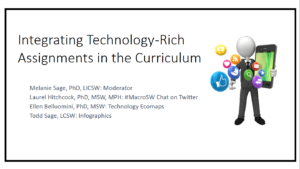 From April 12-14, 2017, the third annual Social Work Distance Education Conference was sponsored by Our Lady of the Lake University’s Worden School of Social Service in San Antonio, TX.
From April 12-14, 2017, the third annual Social Work Distance Education Conference was sponsored by Our Lady of the Lake University’s Worden School of Social Service in San Antonio, TX.
Melanie Sage & Todd Sage of the University of North Dakota, Ellen Belluomini of Dominican University, and I participated in a panel discussion about incorporating technology-based assignments in the social social work curriculum. We talked about three different types of technology-based assignments that can be incorporated into almost any classroom: Twitter Chats, Technology Assessments, and Infographics.
You can access a copy of the slides here: https://www.slideshare.net/laurelhitchcock/integrating-technologyrich-assignments-in-the-curriculum. We also have some assignment specific resources:
#BPDNOLA17 – Road Map for Success: Incorporating Social Media in the Social Work Classroom
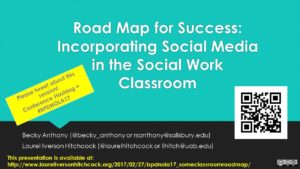 At BPD in 2016, I attended a wonderful session by Drs. Becky Anthony and Jennifer Jewell of Salisbury University titled Building student connection by utilizing social media in the social work classroom. They graciously wrote about this presentation in a blog post – Social Media How-To Guide for Social Work Educators. Today (Saturday, March 4th), Becky and I will be presenting about how we both are the using guidelines that she and Jennifer developed, giving examples from our own teaching and classroom assignments. Please join us at 8:00 AM in Bayside B at the Sheraton in New Orleans for our presentation.
At BPD in 2016, I attended a wonderful session by Drs. Becky Anthony and Jennifer Jewell of Salisbury University titled Building student connection by utilizing social media in the social work classroom. They graciously wrote about this presentation in a blog post – Social Media How-To Guide for Social Work Educators. Today (Saturday, March 4th), Becky and I will be presenting about how we both are the using guidelines that she and Jennifer developed, giving examples from our own teaching and classroom assignments. Please join us at 8:00 AM in Bayside B at the Sheraton in New Orleans for our presentation.
Here is a link to the slides from our presentation: https://www.slideshare.net/laurelhitchcock/bpdnola17-road-map-for-success-incorporating-social-media-in-the-social-work-classroom
Also, information about developing professional social media guidelines for the classroom can be found here.
Here is our abstract with the learning objectives:
#BPDNOLA17 – Visualizing Data: Infographic Assignments across the Social Work Curriculum
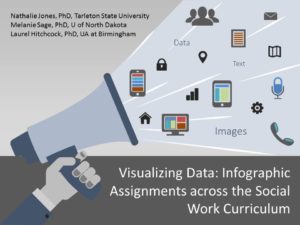 Today is the third day (Friday, March 3rd) of #BPDNOLA17, and I am presenting with some of my favorite #swtech peeps, Dr. Nathalie Jones of Tarleton State University and Dr. Melanie Sage of the University of North Dakota, at 1:45pm in Bayside C at the Sheraton in New Orleans. We will be talking about an infographic assignment that we jointly developed and implemented with students at each of our campuses. The use of infographics for classroom assignments is becoming commonplace in higher education, although less is known about its use in social work education. Our workshop will review how we collaborated to develop, implement and evaluate an infographic assignment for courses across the social work curriculum.
Today is the third day (Friday, March 3rd) of #BPDNOLA17, and I am presenting with some of my favorite #swtech peeps, Dr. Nathalie Jones of Tarleton State University and Dr. Melanie Sage of the University of North Dakota, at 1:45pm in Bayside C at the Sheraton in New Orleans. We will be talking about an infographic assignment that we jointly developed and implemented with students at each of our campuses. The use of infographics for classroom assignments is becoming commonplace in higher education, although less is known about its use in social work education. Our workshop will review how we collaborated to develop, implement and evaluate an infographic assignment for courses across the social work curriculum.

